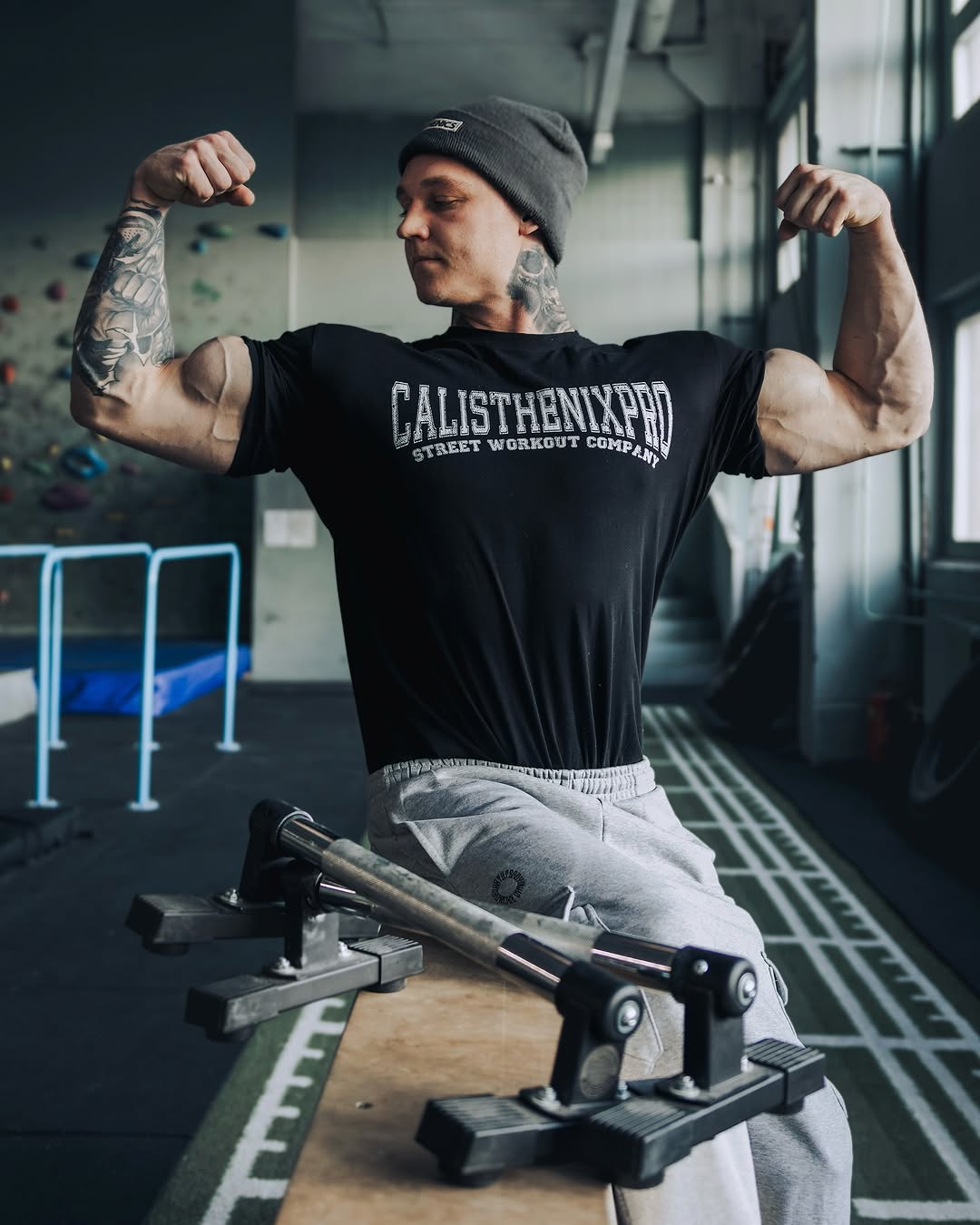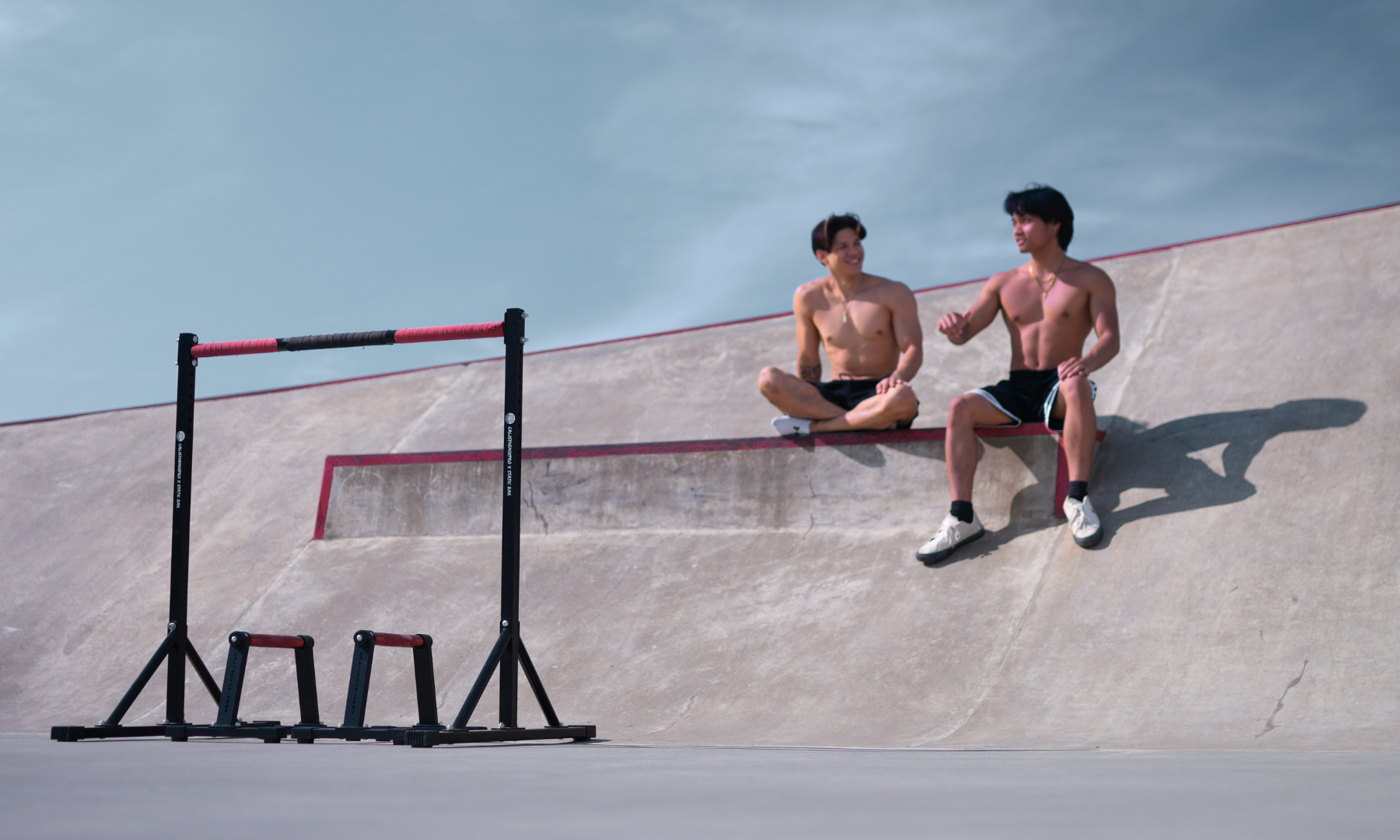The Ultimate Guide to Progressive Overload in Calisthenics

Master Your Skills and Strength with Smart, Structured Progression
Progressive overload is the foundation of all physical progress — whether you're chasing your first front lever, building massive pushing power with weighted dips, or trying to level up your static holds and dynamics.
It’s not just for powerlifters or gym bros — it’s the most powerful concept in calisthenics too. If you're serious about improving your performance, unlocking new skills, and building long-term strength, this guide is for you.
🔍 What is Progressive Overload?
Progressive overload means gradually increasing the demands placed on your body during training to stimulate growth and adaptation. In simple terms: do more over time — more reps, more weight, more difficulty, or more intensity.
Without overload, your body adapts and plateaus. With it, you evolve.
🧠 How Progressive Overload Applies to Calisthenics
There are two main styles of overload in calisthenics:
1. Skill-Based Overload (Bodyweight Progression)
Used when training static holds, control-based strength, and dynamic freestyle moves.
Progress by:
-
Increasing hold duration (e.g. front lever hold from 5s to 10s)
-
Advancing to harder progressions (tuck → advanced tuck → straddle → full)
-
Increasing range of motion (e.g. deeper planche lean)
-
Decreasing assistance (e.g. using resistance bands → no assistance)
-
Improving form quality (from bent knees to straight legs)
2. Weighted Calisthenics Overload
Used for building raw strength through compound movements like pull-ups, dips, push-ups, squats, etc.
Progress by:
-
Adding external weight (dip belt, vest, plates)
-
Increasing total volume (sets x reps x load)
-
Reducing rest time for density training
-
Improving tempo (slower negatives, explosive concentrics)
🧱 The 4 Pillars of Effective Overload
Whether skill-based or weighted, here’s how to structure overload effectively:
🔹 1. Track Your Training
What gets measured gets managed. Use a training log to note your sets, reps, rest, weight, and progression.
🔹 2. Progress in Small Increments
Add 2.5-5 lbs per week in weighted work. Hold a skill 2 seconds longer. Progress slowly to avoid injury.
🔹 3. Deload When Needed
Progress isn’t linear forever. Deload every 4–6 weeks to recover and reset.
🔹 4. Prioritize Form & Control
Progressing with bad form leads to plateaus and injuries. Never sacrifice form for numbers.
💪 Progressive Overload Examples
📌 Skill-Based Example: Front Lever
-
Week 1: 3x10s tuck lever holds
-
Week 2: 3x12s tuck lever holds
-
Week 3: 3x8s advanced tuck lever
-
Week 4: 3x10s advanced tuck lever
-
Week 5: Add bent-leg straddle lever attempts
📌 Weighted Example: Weighted Pull-Ups
-
Week 1: 4x6 @ +10 kg
-
Week 2: 4x7 @ +10 kg
-
Week 3: 4x6 @ +12.5 kg
-
Week 4: 4x7 @ +12.5 kg
-
Week 5: Deload (bodyweight only or lighter sets)
🛠 Tools That Help
-
Resistance Bands – for scaling skills and removing assistance progressively
-
Dip Belts / Weight Vests – for clean, effective strength overload
-
Parallettes – improve range of motion and control for pushing exercises and planche work
-
Static Bar Pro – perfect for pairing push/pull overload days and statics in one clean combo
-
Liquid Chalk – better grip = better control = better overload stimulus
🔁 Cycle Between Skills & Strength
A smart calisthenics athlete knows when to focus on raw strength and when to shift to skill development. Periodize your training. For example:
-
4 weeks weighted calisthenics focus
-
4 weeks skill-heavy block
-
Deload → repeat with a new goal in mind
📈 Final Word: Stay Consistent, Stay Humble
Progressive overload is simple in theory, but powerful in execution.
If you can commit to small, steady progress over months — your body will transform, and the skills you once dreamed of will become your warm-ups.
Keep it structured. Stay consistent. Trust the process.
Train smarter. Evolve stronger.
— Team Calisthenixpro




